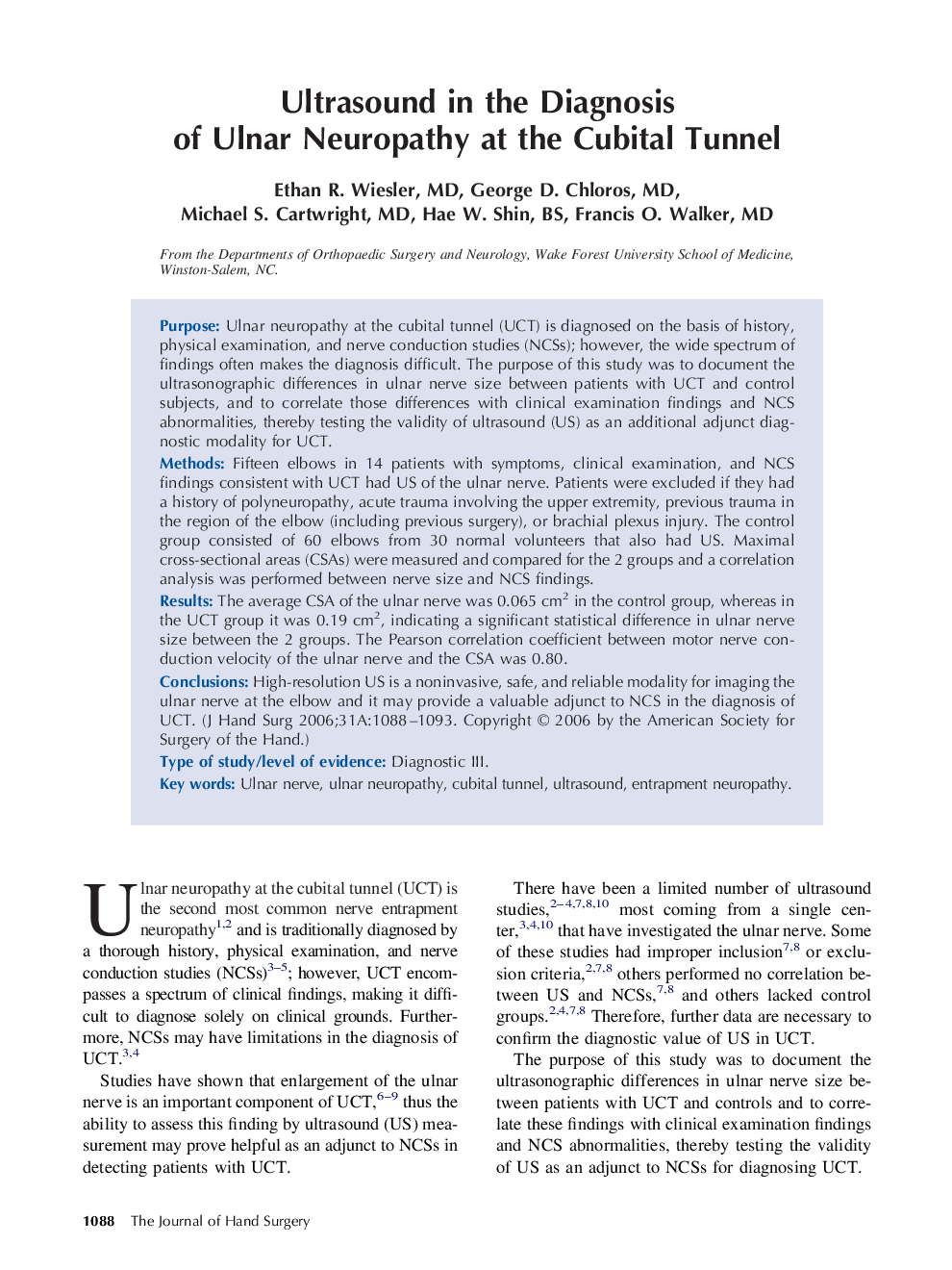| Article ID | Journal | Published Year | Pages | File Type |
|---|---|---|---|---|
| 4071178 | The Journal of Hand Surgery | 2006 | 6 Pages |
PurposeUlnar neuropathy at the cubital tunnel (UCT) is diagnosed on the basis of history, physical examination, and nerve conduction studies (NCSs); however, the wide spectrum of findings often makes the diagnosis difficult. The purpose of this study was to document the ultrasonographic differences in ulnar nerve size between patients with UCT and control subjects, and to correlate those differences with clinical examination findings and NCS abnormalities, thereby testing the validity of ultrasound (US) as an additional adjunct diagnostic modality for UCT.MethodsFifteen elbows in 14 patients with symptoms, clinical examination, and NCS findings consistent with UCT had US of the ulnar nerve. Patients were excluded if they had a history of polyneuropathy, acute trauma involving the upper extremity, previous trauma in the region of the elbow (including previous surgery), or brachial plexus injury. The control group consisted of 60 elbows from 30 normal volunteers that also had US. Maximal cross-sectional areas (CSAs) were measured and compared for the 2 groups and a correlation analysis was performed between nerve size and NCS findings.ResultsThe average CSA of the ulnar nerve was 0.065 cm2 in the control group, whereas in the UCT group it was 0.19 cm2, indicating a significant statistical difference in ulnar nerve size between the 2 groups. The Pearson correlation coefficient between motor nerve conduction velocity of the ulnar nerve and the CSA was 0.80.ConclusionsHigh-resolution US is a noninvasive, safe, and reliable modality for imaging the ulnar nerve at the elbow and it may provide a valuable adjunct to NCS in the diagnosis of UCT.Type of study/level of evidenceDiagnostic III.
